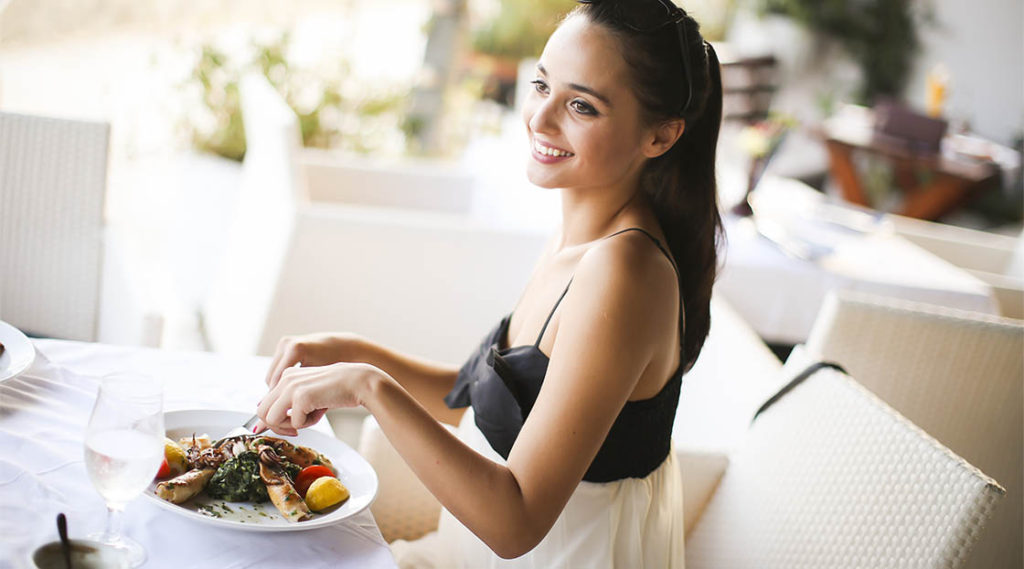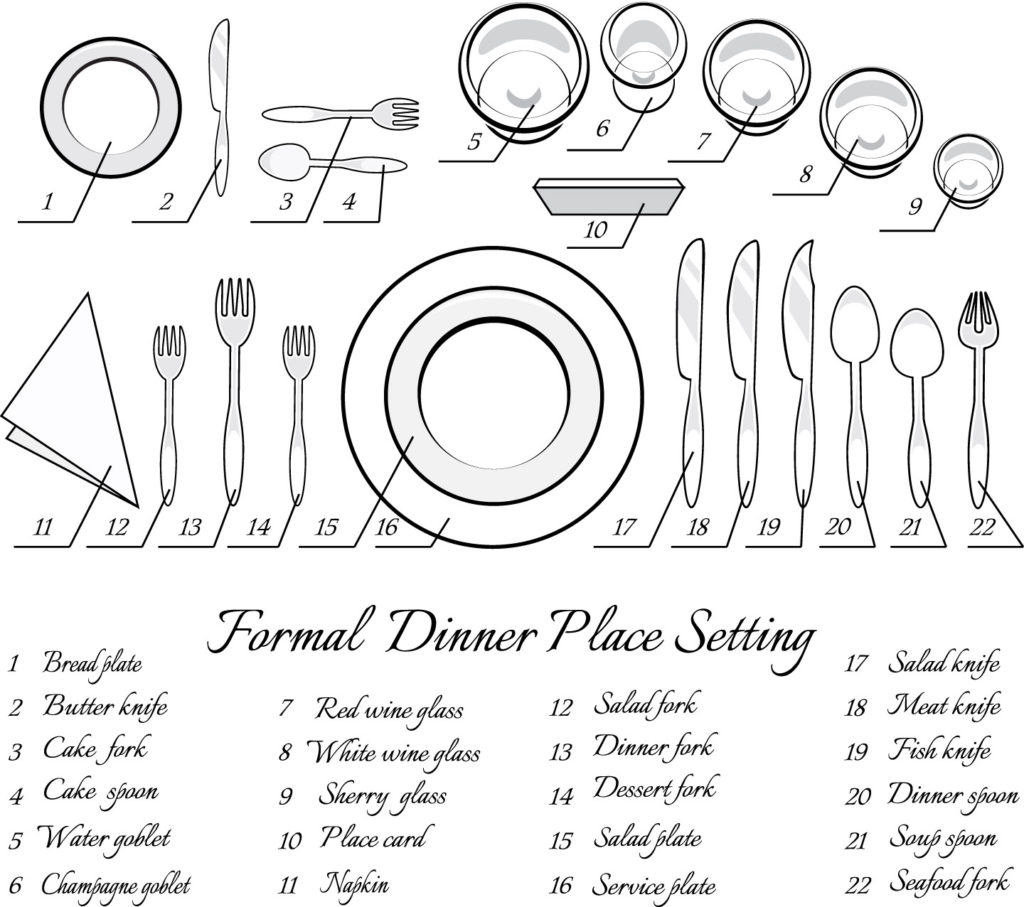

Whether you will attending a business luncheon, wedding reception, or an upscale dinner party, you will want to be sure you are equipped with the knowledge of proper table etiquette. Having the know-how to make it through your get-together successfully will enable you to make a good impression, as well as not feel nervous about what you should or shouldn’t be doing.
If you have been a bit uncertain about which utensil to use during different times of your meal, or the proper way to pass food to the other guests, we would like to help. Here we will be discussing the Top Ten Table Etiquette Tips to give you a well-rounded view that will enable you to feel more confident, which will allow you to focus on enjoying your meal and your company.
![]()
It is customary to place your napkin in your lap while dining. If there is an individual hosting the luncheon or dinner, wait for this person to remove their napkin from the table. This is your cue to do so also. If there is no host, place your napkin in your lap immediately after you are seated. Unfold your napkin in your lap, it should remain there until it is needed or when the meal has officially ended. The host will typically signal the end of the meal by resting their napkin on the table. Your napkin should be neatly placed on the table to the left of your place setting when your meal is finished.
![]()
The instruction of keeping your elbows off the table has been installed in many of us from our first table experience. It is still considered, to this day, bad manners when you don’t follow this rule. Although we are in a day and age that is less formal, you never know who you might be dining with, and what their values are, so it is best to keep your elbows off the table to avoid being seen as unrefined. Keeping your elbows off the table will also assist with keeping your posture straight, which can give you a more sophisticated look while you are dining with your guests.
![]()
Depending on the setting you are in, most gatherings start with the wine being served as you are waiting for your meal to arrive. To have a more experienced look, it is important to hold your wine glass properly. White wine glasses are typically held by its stem, closer to the base. This not only prevents fingerprints from being left on the bowl of the glass, it also prevents the wine from warming up, as white wine is served chilled. Red wine, normally served at room temperature, can be held by the bowl. It is recommended to drink from the same side of your glass each time; this will prevent lipstick smudges from covering the entire rim of your glass. If you are the one tasked with pouring the wine, hold the bottle towards the base while pouring. Fill red wine glasses one-third of the way full, and white wine about halfway. Be sure to offer others more wine before pouring your second glass. Never drink more than your guests are drinking.
![]()
You might not give much thought to proper bread etiquette until the bread basket is sitting in front of you, it is then you wish you had brushed up on what is expected. Bread is commonly served before the meal arrives, and is most often placed in a basket for sharing. If the basket is closest to you, you may simply offer it to the person on your right. If you are tasked with cutting the bread, never touch the bread with your hands. It is proper to use the bread basket cloth if it is long enough. After you have cut the bread, offer some to the person on your left, and then proceed to pass the bread to your right.
![]()
It is very likely you will be asked to pass a dish or two, as well as the salt and pepper. Food should always be passed to the right. While passing to the person next to you, he or she might take the plate from you, or they may serve themselves while you are holding the plate. If a plate is noticeably heavy, it should be placed on the table as you are passing it. If the plate being passed contains a serving utensil, this should always be used instead of your own utensils. It often happens that someone will request the salt that is sitting nearby you, if this happens, always pass the salt and pepper together.
![]()
It is proper etiquette to not begin eating until everyone has been served. If you are in a situation where grace will be said before the meal, then eating can begin directly after. If you are unsure of when to start, follow your host’s lead, or begin when you see others have started. One exception to waiting until everyone is served can be in a buffet style setting, you will need to play it by ear and see if the other guests are waiting or starting their meal right away.
![]()
Learning which utensils to use and when can be extremely important if you would like to make a good impression. It can be a bit intimidating, but remembering the proper utensil usage can be achieved if you take a little time to review things. The general rule of thumb is to work your way in. Forks are placed to the left of your plate with the salad fork furthest from your plate, then the dinner fork, and dessert fork. On your right side, closest to your plate, you will find your salad knife, meat knife, dinner spoon, and your soup spoon.
![]()
Depending on your location, there are two traditional ways of handling utensils. The first would be the American style in which you hold your fork and knife in the same manner you would a pen. Your fork is placed in your left hand while your knife is in your right, you proceed to cut one piece, place your knife back down on your plate, and then place your fork in your right hand. European style would be to simply keep the fork in your left hand after cutting your food.
![]()
To avoid looking messy, it is best to not mix and move your food around on your plate too much. Keep food about an inch away from the rim of the plate to avoid accidentally knocking items off. If your meal is one in which cutting is required, do not cut all your food at once, only cut food into one or two bite-sized pieces at a time. This will help keep your plate looking organized and tidy.
![]()
You may have to leave the table momentarily because your phone won’t stop buzzing or you simply have to use the restroom, in these instances, you can politely excuse yourself and step away from the table. There is no need to inform the other table members why you need to leave.
There are many elements to consider when it comes to proper table etiquette, but once you get the basics down, you will do just fine. Below we have provided a handy formal place setting reference guide to help you familiarize yourself with all the items that may be placed in front of you at your next get-together. We hope our etiquette tips have made you feel that you can attend your next luncheon or dinner party with confidence. Enjoy your meal and the company!
